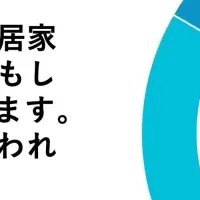
Eli Lilly's Orforglipron: Pioneering Oral GLP-1 Therapy with Promising Phase 3 Results
Breakthrough in Diabetes Treatment: Orforglipron
Eli Lilly and Company, a renowned name in pharmaceuticals, has made significant strides in diabetes treatment with its investigational oral GLP-1 receptor agonist, orforglipron. The recent results published from the ACHIEVE-1 Phase 3 trial reveal promising efficacy and a safety profile akin to existing injectable GLP-1 medications. This innovative treatment could pave the way for future diabetes management strategies, especially for those who prefer oral medications over injections.
The ACHIEVE-1 trial tested orforglipron on adults suffering from type 2 diabetes and inadequate glycemic control despite diet and exercise. The participants were randomly assigned to receive either one of three doses of orforglipron (3 mg, 12 mg, or 36 mg) or a placebo. Over 40 weeks, it showed a significant reduction in A1C levels, dropping between 1.3% to 1.6% from a baseline average of 8.0%. Notably, participants saw improvements as early as four weeks after initiating treatment.
In addition to its glycemic control benefits, those on higher doses of orforglipron experienced an average weight loss of 16 pounds, equating to 7.9% of their body weight. Such results mark a significant achievement compared to placebo effects, emphasizing the dual benefits of this treatment strategy.
The safety profile of orforglipron appears consistent with published data from existing GLP-1 therapies, primarily showcasing gastrointestinal-related adverse events. Over the trial's course, common side effects included diarrhea, nausea, and constipation, generally categorized as mild to moderate. However, with an overall treatment discontinuation rate of only 6% for the 3 mg dose, it indicates that orforglipron is well-tolerated by patients.
Dr. Julio Rosenstock, a leading figure in the trial, stated, “The ACHIEVE-1 trial demonstrated that orforglipron achieved clinically meaningful reductions in A1C and body weight over 40 weeks in adults with type 2 diabetes. The early onset of glycemic improvement reinforces the therapeutic potential of orforglipron as an effective oral GLP-1 therapy for early type 2 diabetes treatment.”
Considering the growing demand for effective diabetes care options without the discomfort of injections, orforglipron emerges as a viable contender. The convenience of a once-daily oral pill eliminates the need for food and water restrictions, making it suitable for many patients managing diabetes.
Lilly anticipates several additional studies focusing on orforglipron, including future trials for weight management and comparative studies against established diabetes treatments like dapagliflozin and oral semaglutide. The company's commitment to advancing this revolutionary treatment reflects a broader goal of enhancing diabetes care through innovative solutions.
As Eli Lilly continues to pioneer advancements in healthcare, orforglipron's success could redefine standards in treating type 2 diabetes. This could ultimately enhance the quality of life for millions of individuals grappling with diabetes, providing hope for a future where effective management doesn't mean compromising on comfort or convenience.
The implications of these findings extend beyond just pharmaceutical advancements; they signify a shift in how diabetes medication could evolve, prioritizing patient experience alongside clinical efficacy. As the healthcare landscape continues to change, Lilly's developments could inspire similar innovations and reimagine treatment paradigms for chronic health conditions.
In conclusion, orforglipron stands at the forefront of a new wave of diabetes therapies that marry efficacy with user-friendly administration. With upcoming data from the ACHIEVE and ATTAIN programs, stakeholders in the diabetes community are eager to see how this groundbreaking therapy can be implemented on a broader scale.
Topics Health)










【About Using Articles】
You can freely use the title and article content by linking to the page where the article is posted.
※ Images cannot be used.
【About Links】
Links are free to use.